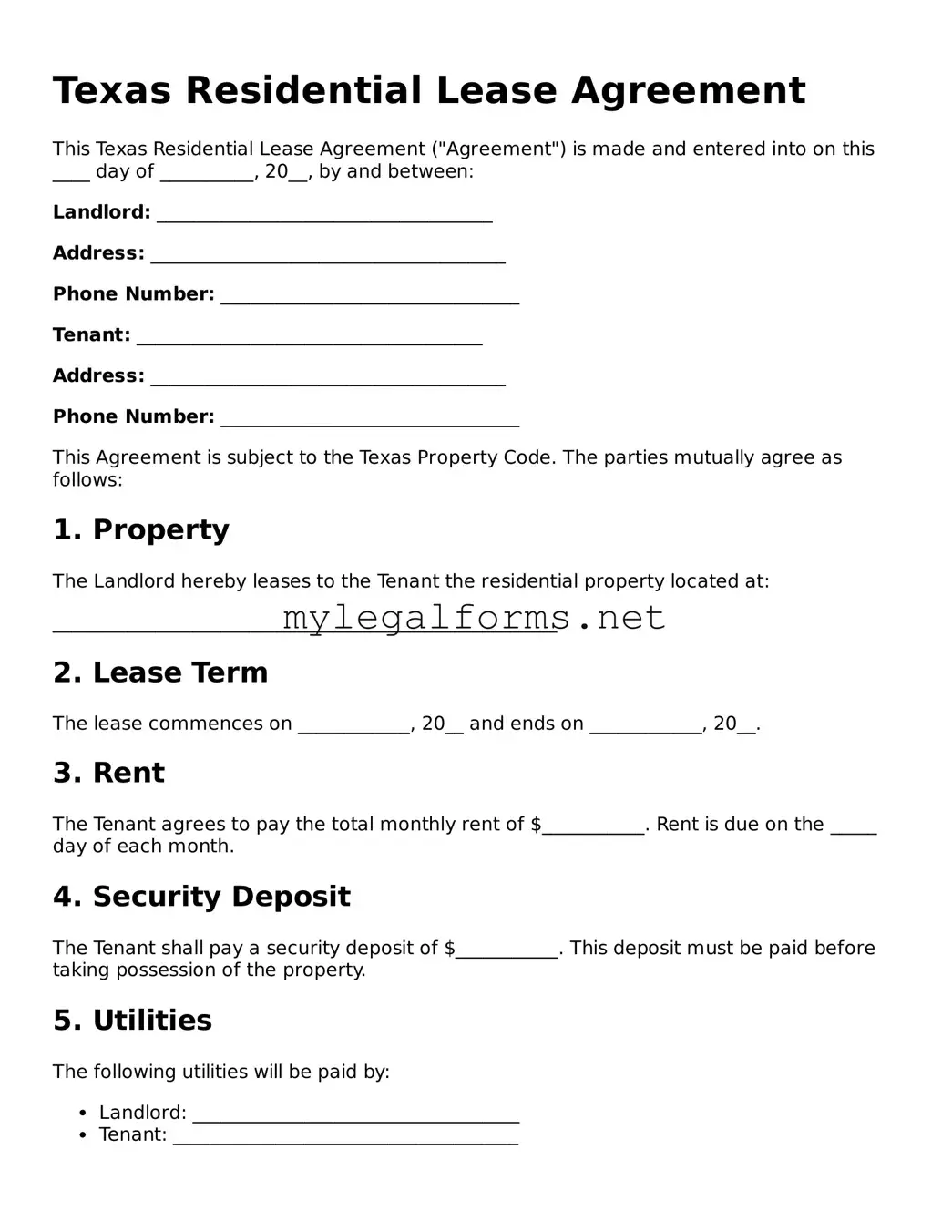Texas Residential Lease Agreement
This Texas Residential Lease Agreement ("Agreement") is made and entered into on this ____ day of __________, 20__, by and between:
Landlord: ____________________________________
Address: ______________________________________
Phone Number: ________________________________
Tenant: _____________________________________
Address: ______________________________________
Phone Number: ________________________________
This Agreement is subject to the Texas Property Code. The parties mutually agree as follows:
1. Property
The Landlord hereby leases to the Tenant the residential property located at:
______________________________________________________
2. Lease Term
The lease commences on ____________, 20__ and ends on ____________, 20__.
3. Rent
The Tenant agrees to pay the total monthly rent of $___________. Rent is due on the _____ day of each month.
4. Security Deposit
The Tenant shall pay a security deposit of $___________. This deposit must be paid before taking possession of the property.
5. Utilities
The following utilities will be paid by:
- Landlord: ___________________________________
- Tenant: _____________________________________
6. Maintenance and Repairs
The Tenant agrees to maintain the property and perform minor repairs. Major repairs will be handled by the Landlord.
7. Use of Property
The property may only be used for residential purposes. No illegal activities are allowed on the premises.
8. Termination
Either party may terminate this Agreement by providing a written notice of ____ days prior to the desired termination date.
9. Governing Law
This Agreement will be governed by the laws of the State of Texas.
10. Signatures
By signing below, both parties agree to the terms set forth in this Agreement:
Landlord Signature: ___________________________ Date: _______________
Tenant Signature: ____________________________ Date: _______________
It is recommended that each party keeps a signed copy of this Agreement for their records.
